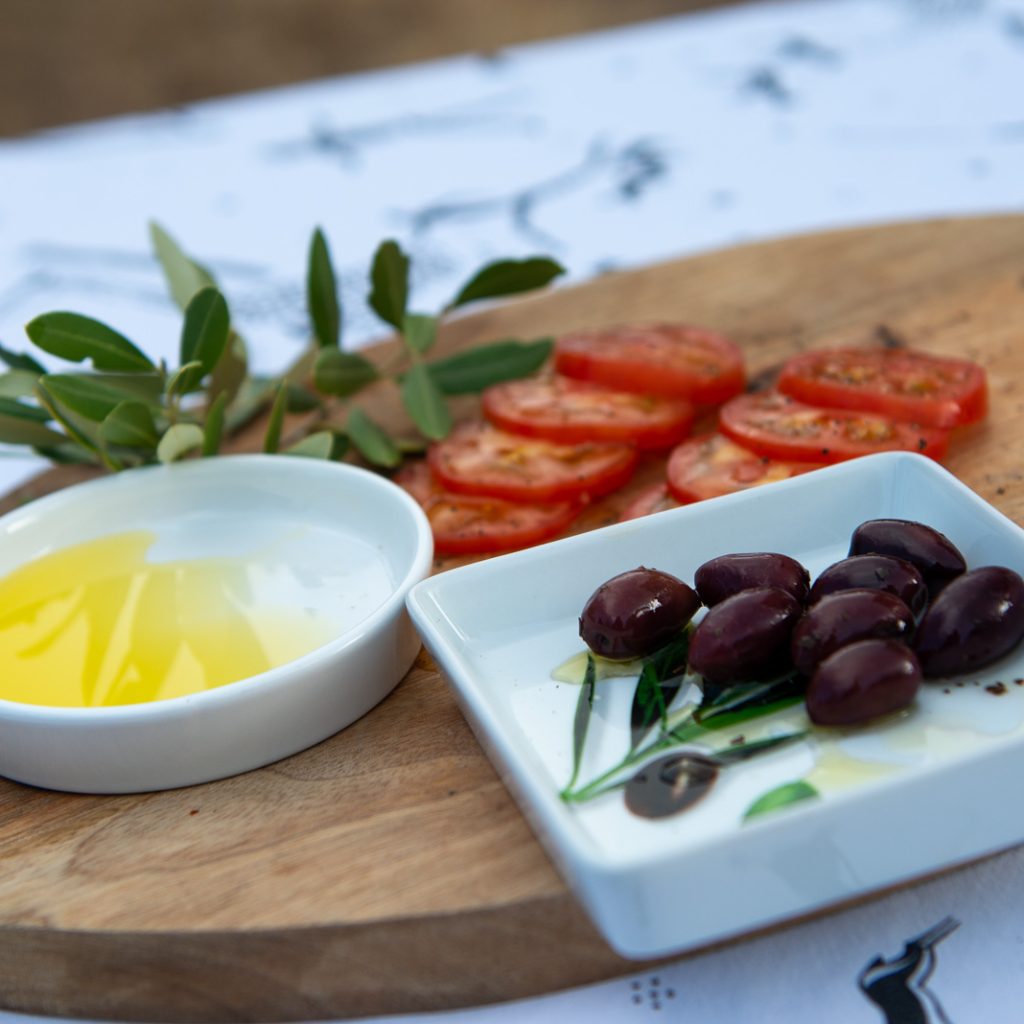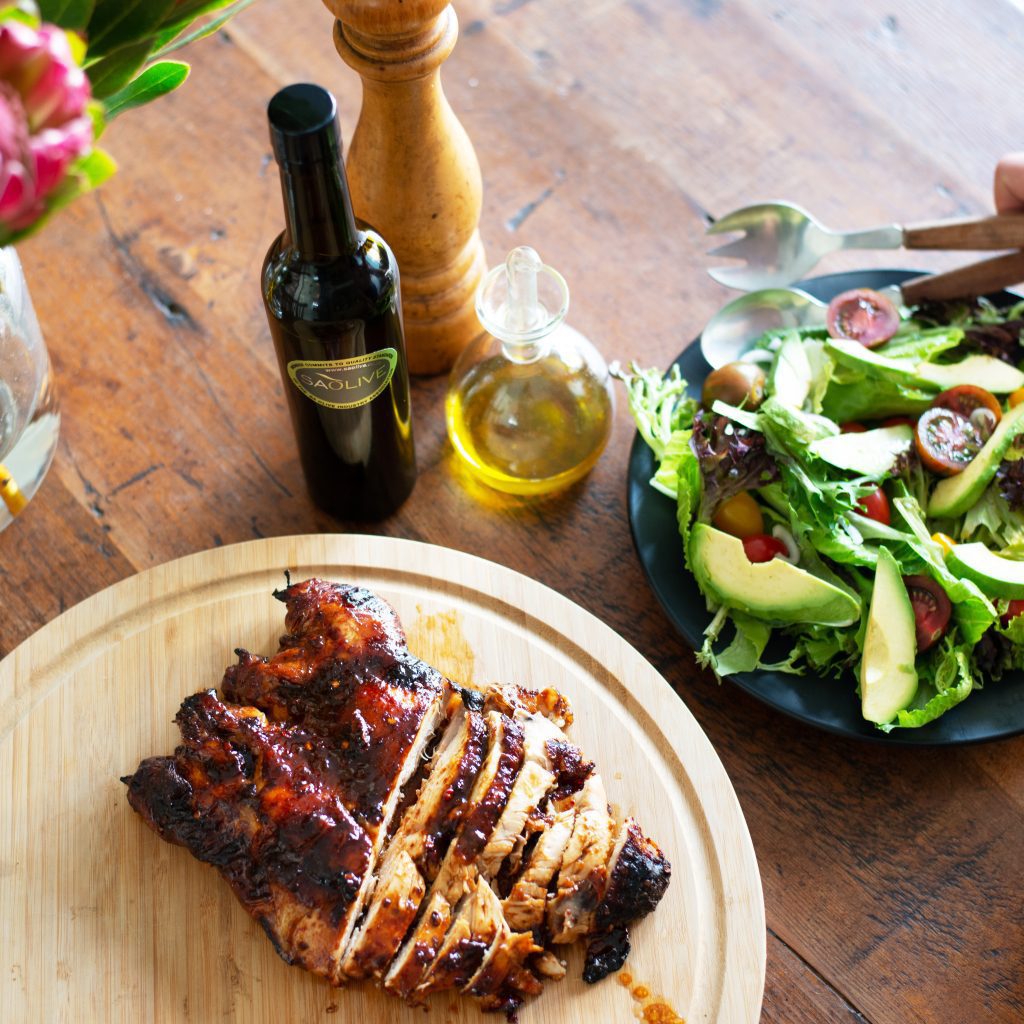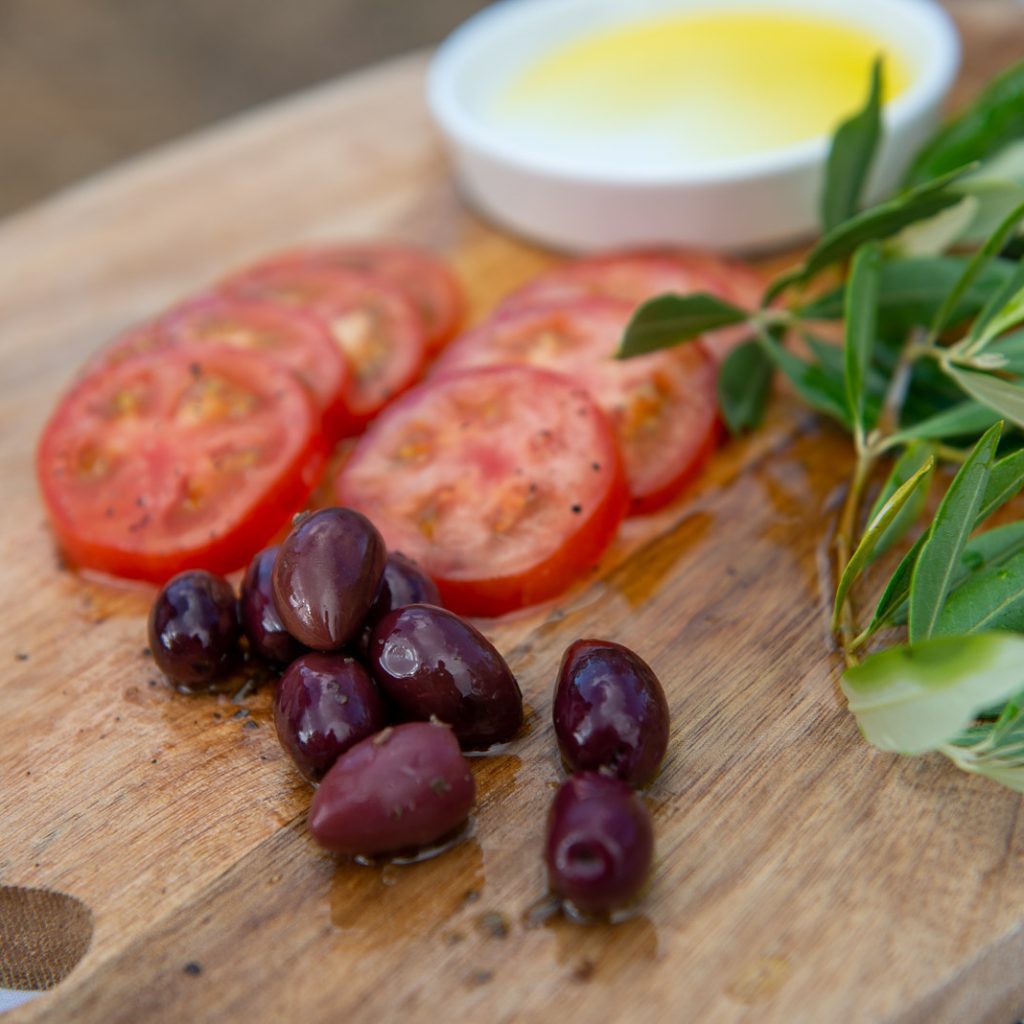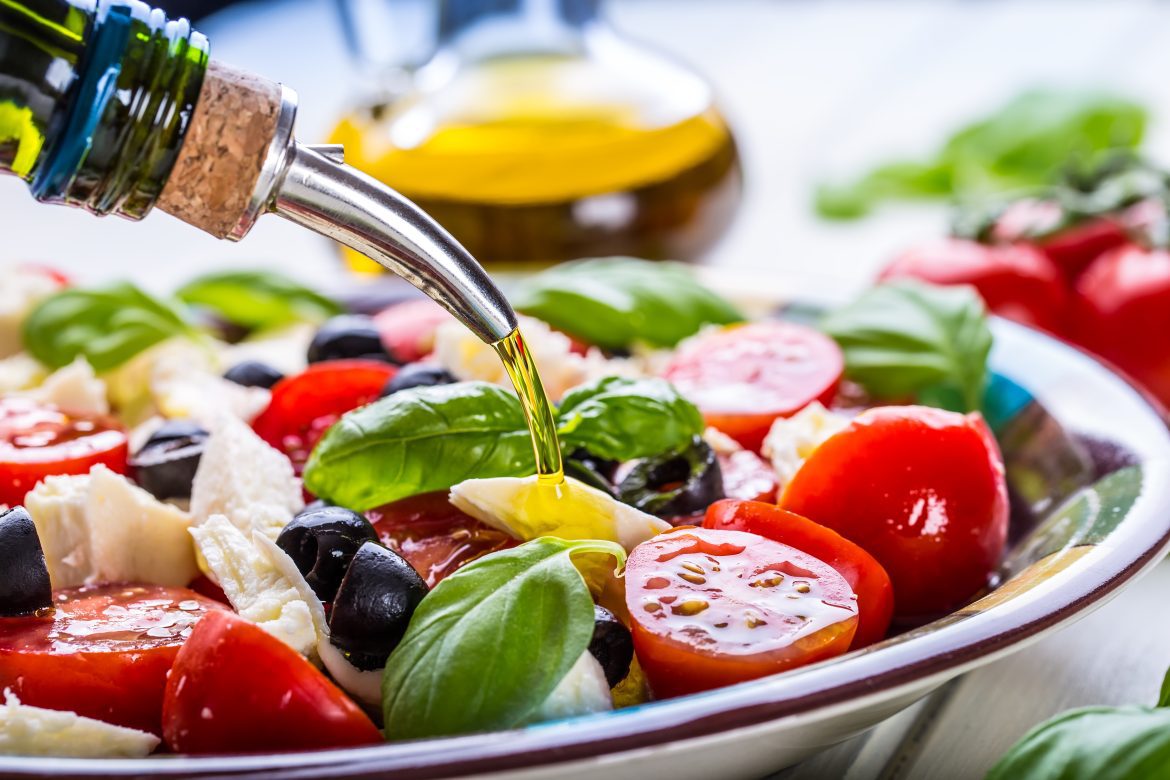There are four main types of olive oil: extra virgin olive oil (EVOO), virgin olive oil, pure/refined olive oil and olive oil. They can be initially categorised based on the means of production and the quality standards revealed by testing.
In South Africa, look out for the SA Olive seal on bottles of EVOO that guarantees it’s 100% authentic, local and complies with all quality requirements.

Different standards worldwide show slight differences in the parameters used to define each grade. The grades of olive oil each have distinct differences in terms of production method, quality and suitability for consumption. It is important to understand the various grades of olive oil, particularly Extra Virgin Olive Oil and Olive Oil, as these pertain not only to the quality of the oil but also to its taste and health attributes. Broadly the quality parameters used to define the different grades are based on chemical and sensory (organoleptic) testing.
Extra Virgin Olive Oil (EVOO)
EVOO is the highest grade of Olive Oil and the fresh juice of the olive. It is a natural olive oil that has a free acidity, expressed as free oleic acid, of no more than 0.8 grams per 100 grams and no sensory defects. It must also display all other characteristics which correspond to those fixed for this grade in the standard. As a result of its high quality and minimal processing, EVOO is high in natural antioxidants, vitamin E and phytosterols from the olive fruit.
EVOO, the highest grade of olive oil, is made by cold-pressing raw, uncured olives without solvents, heat, or chemicals. It has a bold, often fruity or peppery taste and is rich in heart-healthy oleic acid, antioxidants, and phenols.



EVOO grading requirements
For an olive oil to be graded as EVOO, it must meet the following requirements:
- The oil is completely natural and unadulterated, with no additives, preservatives, colouring or flavouring added.
- The oil is free of any defects – not rancid, winey, musty, fusty etc.
- The oil has a measure of fruitiness, well-balanced bitterness and pungency.
- The oil has harmony & balance.
- The oil has gone through a chemical analysis.
- Virgin Olive Oil (VOO)
- VOO is naturally obtained by the same process as EVOO. However, it is a lower-quality oil, with a free acidity of no more than 2.0 g per 100 g and/or slight organoleptic defects.
- Refined Olive Oils (ROO)
- Refined olive oils are obtained from natural olive oils by refining methods which can include degumming, neutralisation and bleaching. It has a free acidity of no more than 0.3g per 100 grams. The refining process also strips the oil of most natural antioxidants found in unrefined oils and may produce trans fats.
- Olive Oil (OO)
- OO is a blend of refined olive oil and natural olive oils that is fit for human consumption. It has a free acidity of not more than 1.0 grams per 100 g. As OO contains ROO, it is also low in natural antioxidants and may produce higher levels of trans fats.
- When is it best to use extra virgin vs. other olive oils?
- Extra virgin olive oil is great for when you want a strong olive taste. For dipping in crusty bread, as a finishing oil over soups or dips like hummus, or even in desserts like olive oil gelato or olive oil cake, the flavour profile of Extra Virgin Olive Oil enhances the dish. It is the perfect accompaniment with a fresh garden salad and pasta.
- Refined olive oil is more neutral in flavour, and therefore often used in marinades or for infused herb oils.
- Because of its distinct health advantages and its high smoke point, extra virgin olive oil is always going to be the best choice to use.
- As the best quality oil available, Extra Virgin Olive Oil demands the highest retail price.
- EVOO styles and food combos
- The smoke point for extra virgin olive oil is 400°F, although research indicates that EVOO can be used at even higher temperatures, such as for baking and frying, without breaking down.
- The best flavour combinations are obtained when using the most appropriate style of oil with a particular food. The more intensely flavoured foods are best complemented with more intensely fruity oil, whilst for a special dessert; very delicate oil will enhance the subtle flavours without dominating the dish.
- Meat
- Use the more intensely fruity oils for grilling meat, sautéing garlic and onions, on toast with ricotta or swirled into hot soup.
- Salad
- Use medium-style oil for baking fresh tuna, with chicken, on subtle salads and in baking.
- Dessert
- Use delicate oil for mayonnaise, in desserts and over fresh fruit.
- The drizzle factor
- Join the foodie brigade and finish your food with flair and panache by drizzling a little EVOO on your dish as you serve it. From pasta and pizza to soups and toast and even scrambled eggs, Extra Virgin Olive Oil gives your food a great dish appeal, and, in your mouth, it makes the food feel and taste even more delectable. Some chefs literally drizzle EVOO on everything they serve – it looks good, and it tastes even better.
- Have EVOO on hand and ready to drizzle from a cruet – or an attractive vessel that easily dispenses your liquid gold onto the plate – because EVOO belongs on the table as the third essential condiment along with salt and pepper.
- For more information, please see www.saolive.co.za
- Facebook: https://www.facebook.com/SAOliveIndustry
- Instagram: https://www.instagram.com/saoliveindustry/







